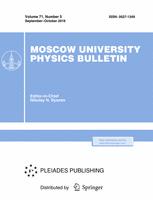Absorption and fluorescence spectra for living cells of green sulfur bacteria inhabiting the anaerobic zone of two meromictic lakes separated from the White Sea have been studied. The spectral-optical properties of pure cultures of green-colored and brown-colored species of green sulfur bacteria Chlorobium phaeovibrioides have been compared, and the content of bacteriochlorophyll molecules in one bacterial cell of each species has been estimated. The method of separating the contributions of different groups of green sulfuric bacteria to bacteriochlorophyll fluorescence was applied for a mixture of two species of bacteria with different pigmentation. The depth distributions of fluorescence intensity and concentration of bacteriochlorophylls for microorganisms inhabiting the Trekhtzvetnoe and Elovoe lakes at the Kandalaksha Gulf of the White Sea were plotted.
42.68.Xy Ocean optics
$^1$Department of General Nuclear Physics, Faculty of physics, Lomonosov Moscow State University, chair of General Physics .\
$^2$Federal Research Centre “Fundamentals of Biotechnology” of the Russian Academy of Sciences\
$^3$Faculty of Biology, Lomonosov Moscow State University\
$^4$Institute for Information Transmission Problems of the Russian Academy of Sciences (Kharkevich Institute)\
$^5$A.N. Belozersky Institute of Physico-Chemical Biology, Lomonosov Moscow State University



